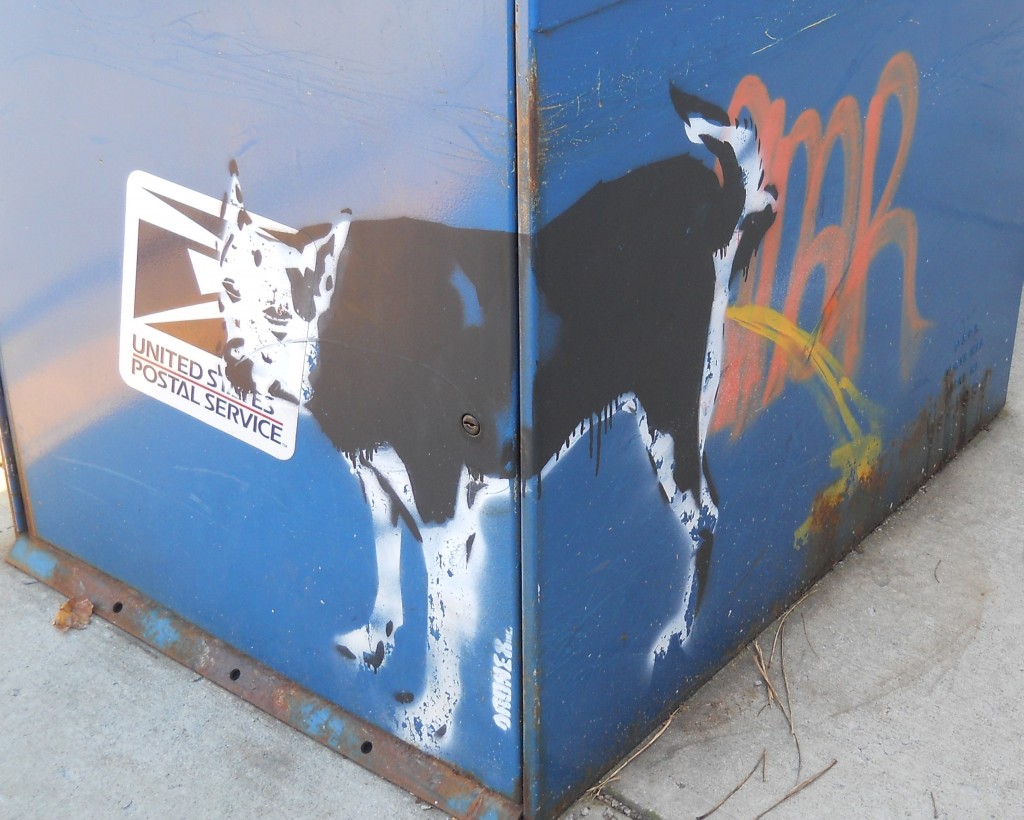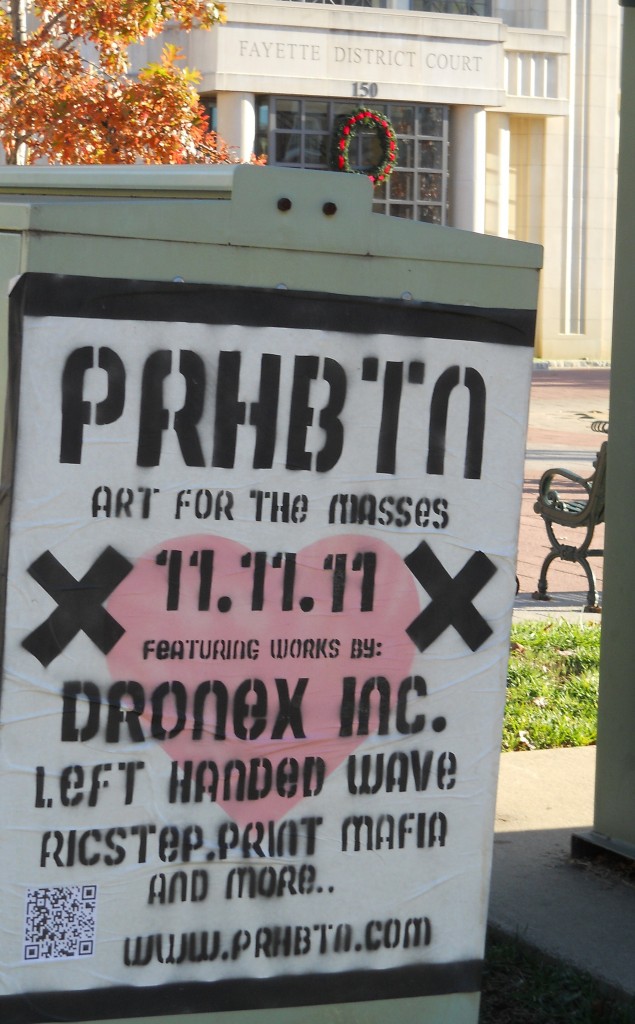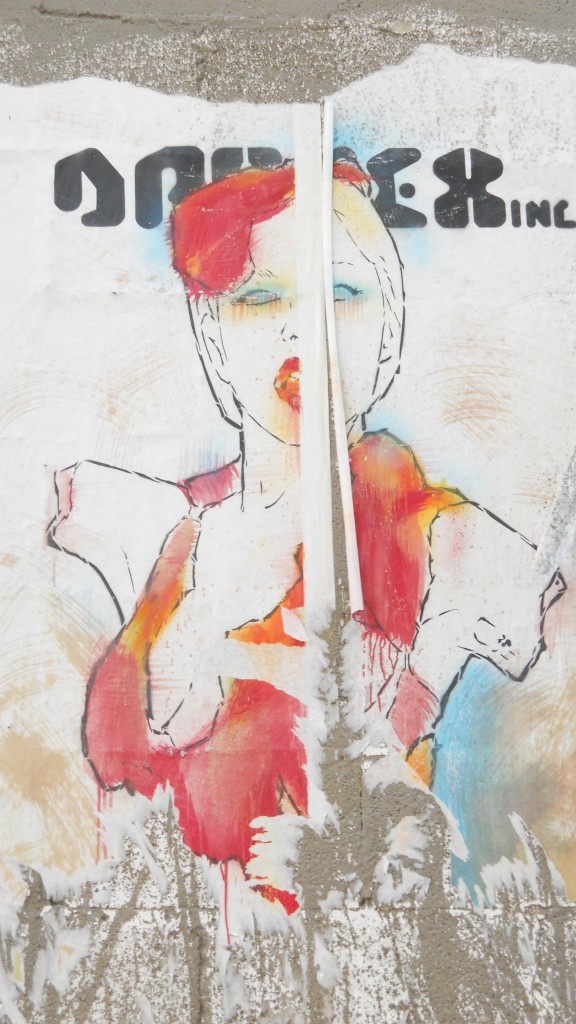PRHBTN runs 11/11-18 on Manchester Street
By Clay Shields
“Your expectations will be simultaneously defied and exceeded”—Myke Dronez, CEO, Dronex, Inc.
The Herald-Leader refused to write this article. Now a dirt bag has to do it.
On November 11, Lexington will begin its first street art exhibition, PRHBTN. “Street art” is a catch-all term for art processes and products created in public spaces. More often than not, the phrase refers to unsanctioned work done illegally by individuals as graffiti. The PRHBTN event will showcase both unsanctioned and “legitimate” artists who utilize street art methods.
Since its birth fifty years ago—most notably in the subways of New York and Philadelphia—modern graffiti has been steeped in counter-culture. In a culture where they were otherwise silenced, writers like Taki 183 and Cornbread began “tagging” their names everywhere in an act of defiant self-acknowledgement. Graffiti (and later street art more generally) became an avenue for reclaiming the public spaces of the city through the self-expression of a largely disenfranchised, impoverished, immigrant youth: a bold, simple, “I was here (and here and here and here).”
After roughly half a century, graffiti has finally reached some level of wide-spread cultural interest. In addition to the subversive work being done within the subculture, it has also become commodified in the same way hip hop was—taken from the margins and repackaged by corporations to sell deodorant to the masses. But just like hip hop, many key figures in the movement have remained true to their counter-cultural roots by utilizing this new found popularity to further their own agendas.
Internationally known graffiti artists have their own documentaries and books. Banksy collaborated with (and mocked) the pop-culture powerhouse The Simpsons. Shepard Fairey’s (“OBEY” in the graffiti world) iconic “HOPE” posters gained official approval from the 2008 Obama campaign. As a result of this increased exposure, society has developed a simultaneous, seemingly contradictory, fascination with and aversion to street art.
Lexington is no exception.
The great Lexington graffiti bust of ’11
Less than five months ago, Mayor Jim Gray announced the arrest of ten local graffiti artists in order to publicize an overall “crackdown” on graffiti in Lexington. The press conference came as a response to the growing anxieties of citizens concerning graffiti in the Lexington area. Most notably, the Mayor’s appearance was provoked by the efforts of one individual, a Lexington Parks and Recreation board member, Lisa Johnson.
Johnson took it upon herself to investigate and find the culprits responsible for vandalizing Woodland Park, which she claimed was so riddled with graffiti that people were afraid to go to the park. (I say “claimed” here simply because that park is possibly the most popular and crowded park in the city year round, especially during the height of summer when Gray’s announcement was made).
Yet during the press conference, the Mayor and his graffiti task force alluded to their own slight ambivalence toward the “art” of graffiti. Officer Ricky Lynn mentioned that the team traveled to Louisville in order to talk with street artists about their work, which gave him an appreciation for the style as an “art form.” Lynn went on to advance his hope that the city could find some sort of compromise by providing “legal graffiti” locations to quell the illegal activity.
The anti-graffiti “Buffers” shirts produced by Lisa Johnson ironically employ popular graffiti art tropes: a stylized “street” font, a stencil pattern, and fuzzy over-spray (paint that has sprayed over the borders of a stencil creating a hazy effect). Even Mayor Gray acknowledged that the work can be an art form if it is done with the permission of property owners.
But herein lies the problem. Graffiti is gaining acceptance from culture only by accepting culture’s terms: graffiti artists are being asked to assimilate into a world of private property that is fundamentally contradictory to the meaning behind their work—they are being asked to drop the pre-fix (graffiti) to their name.
PRHBTN: 11.11.11
In this sense, a graffiti art show—where the work is removed from its all-important public setting and sold to private parties—seems like the most problematic thing of all. Banksy’s documentary Exit Through the Gift Shop, now widely discussed thanks to an Oscar nomination, provokes any intuitive viewer to ask how street art is altered and even compromised when it is repackaged in a gallery space for the art world. Even more succinctly, in a lot of ways, this repackaging can be “like castrating your street art,” as Lexington graffiti artist CEO Dronez put it.
But this is only one opinion from one member of the street art community (one, admittedly, I tend to agree with); other artists have a range of philosophies and styles. The intersections of art and street art yield a huge spectrum of viewpoints, and many people are less interested in keeping them separated than they are in colliding them together for the sake of seeing what might happen.
Enter Jessica Case.
After her viewing of Banksy’s Exit Through the Gift Shop, Case felt a renewed interest in street art, which she considers a “real part of the fabric of our everyday lives because it decorates the surroundings of our urban environment.” As a lawyer and previous co-owner of Buster’s, she admits that she is an outsider to the street art community; but Case hopes to use PRHBTN to foster an increased awareness of the sub-culture in order to share her own appreciation of the often misunderstood world of graffiti. Simply put, “it’s all about exposure,” she says: for the artists, the people coming to view the show, and for any mutual learning experience that may come as a result.
In an effort to guarantee such exposure, Case booked the popular electronic band Passion Pit to do a 18+ DJ set alongside local acts on the opening night of the event, Friday November 11. Tickets will be $20 in advance and $25 at the door on the opening, but the show will run for another week, free to the public, from 5-10PM. (Events take place at the Warehouse, 1211 Manchester Street.)
PRHBTN, so named for its representation of arts that have been prohibited, will showcase a broad range of street art techniques and artists, including Dronex Inc., Left Hand Wave, Ricstep, Print Mafia, Caper, Chasen Igleheart, Housefire, Katie Blaesing, Kenton Montgomery, Nate Corder, Joe Schubert, Casper, Creep, David Wise, Rick Lewis, Michael Haas, Graham Allen, Kurt Gohde, and Kremena Todorova.
In creating PRHBTN, Case is starting a conversation in Lexington. It is the first time anything like this has been done here, and the results may be unpredictable, but she is just happy to provide the opportunity. And she promises not to stop there. Case hopes to begin a tradition this year and make PRHBTN an annual event.
Ride the wave
The general fascination with graffiti in Lexington seems to be growing. Less than a year ago I participated in a three mural group project spearheaded by Transylvania professors Kremena Todorova and Kurt Gohde. We installed stenciled wheat pastes on Sav’s Grill, the Sayre School, and the Hop Hop. Ricstep was commissioned for a mural on the side of LOT gallery and recently had a full show at Taste. Left Hand Wave has since started his own show in the same space.
It’s to the point where one is unable to tell which is more important to the term street art–the street or the art in street art. Irrespective of how the cultures are changing each other, it is clear that they will never blend together fully. What’s important now is to consider the place of street art in our society: how and where it overlaps and pushes against our preconceived notions of “legal” self-expression. Events like PRHBTN can’t answer these questions, but they can surely provoke a broader audience to ask them.
PRHBTN will run between November 111 and November 18 at the Warehouse, 1211 Manchester Street. Opening night will feature performances by some of the nation and region’s top dance/electronic artists, accompanied by appearances from trained performance artists and spectacular light installations from 9 P.M. – 4 A.M. Tickets: $20; 18+. Thereafter, it’s open daily for free, 5-10 P.M.







robin waller
I love Dronex. I have one of his t-shirts and ceramic dolls. I have 2 bumper stickers on both of my cars.